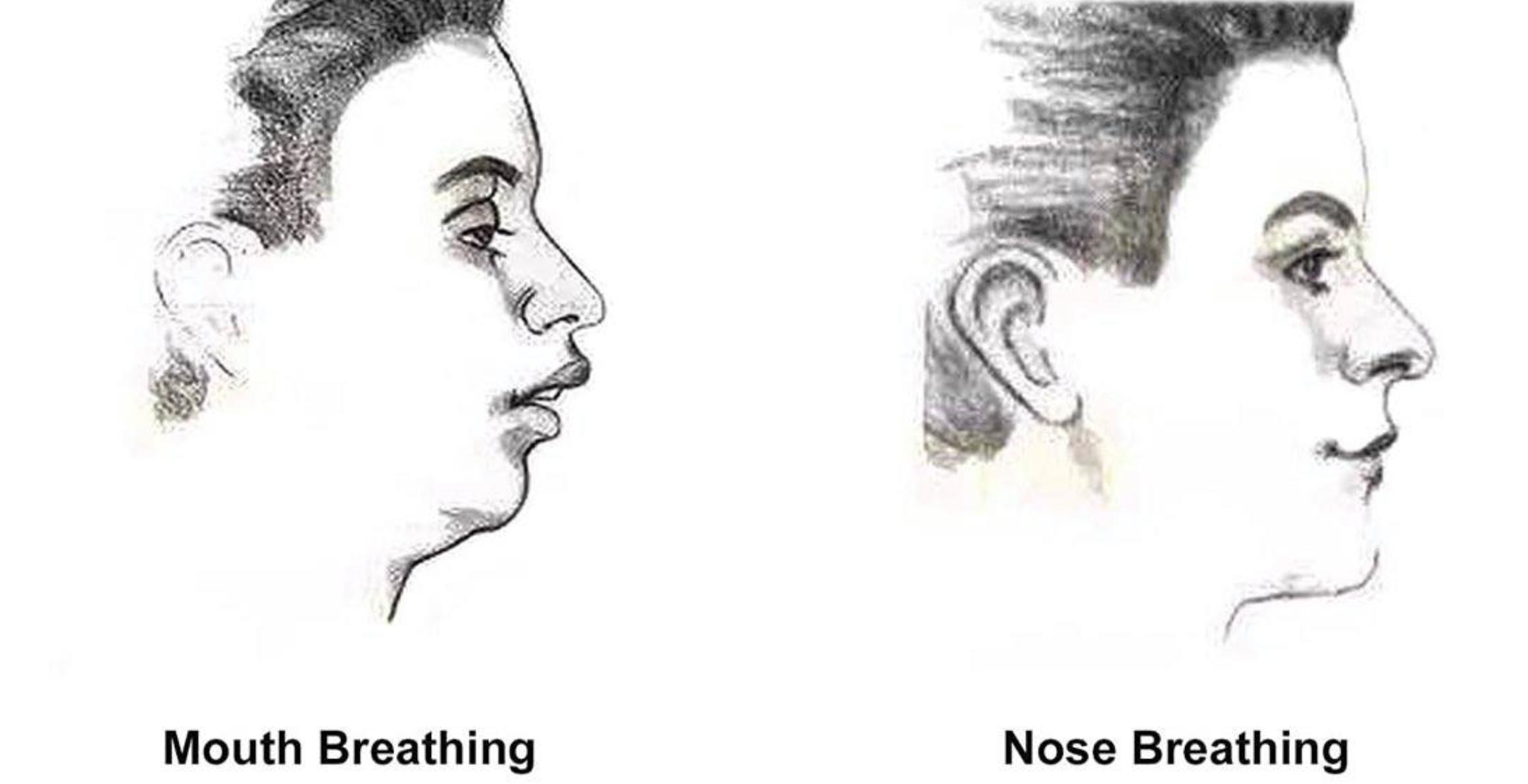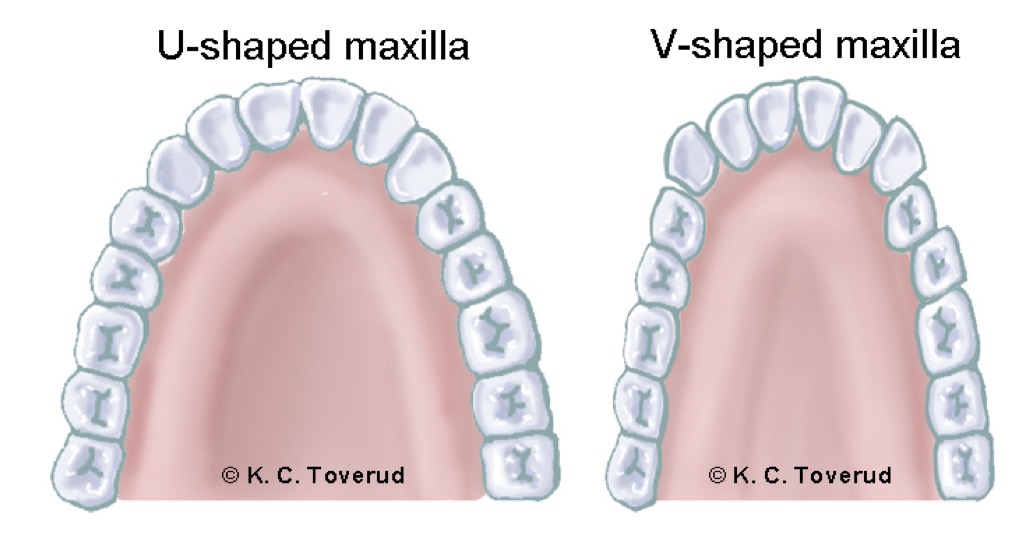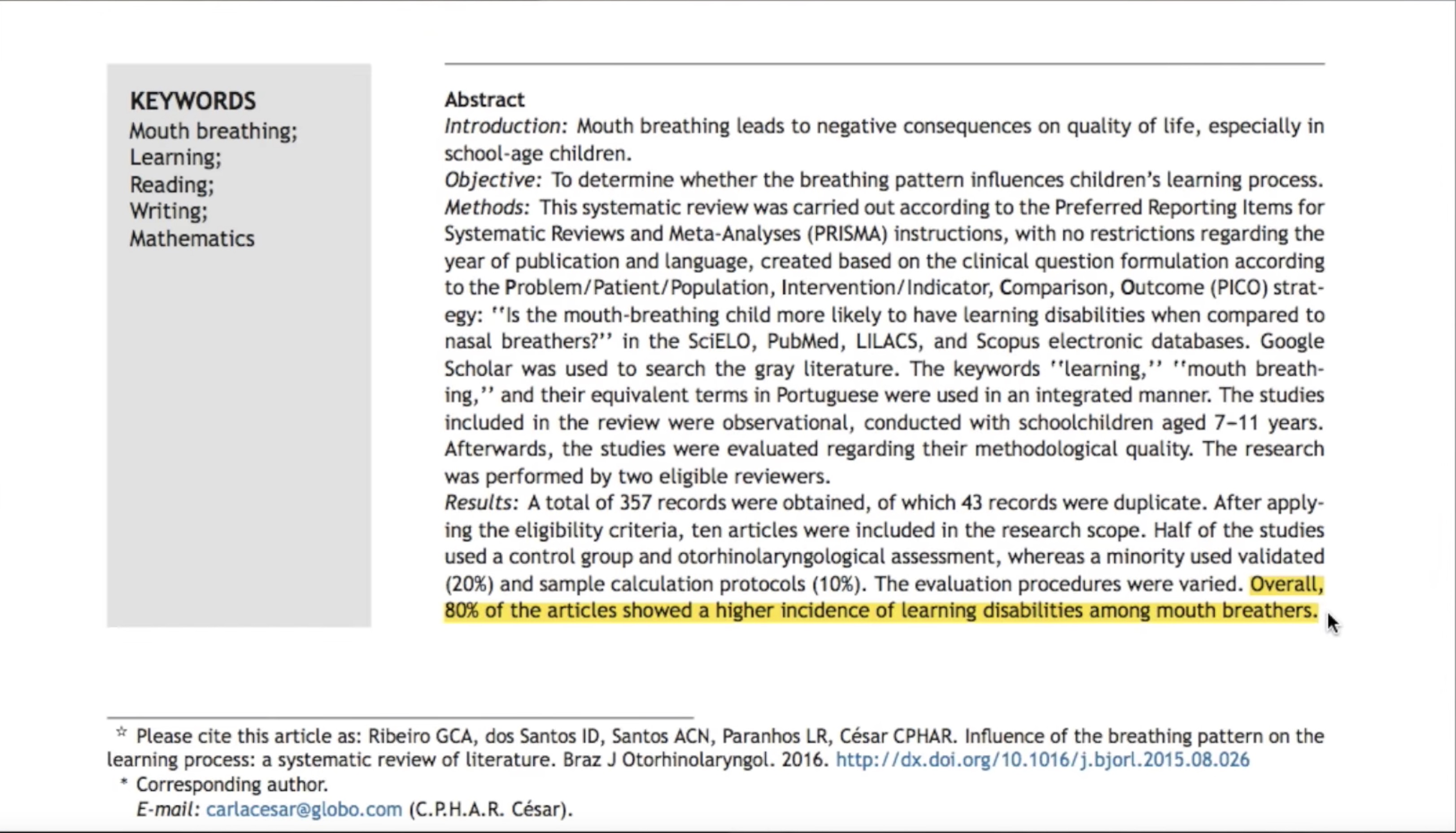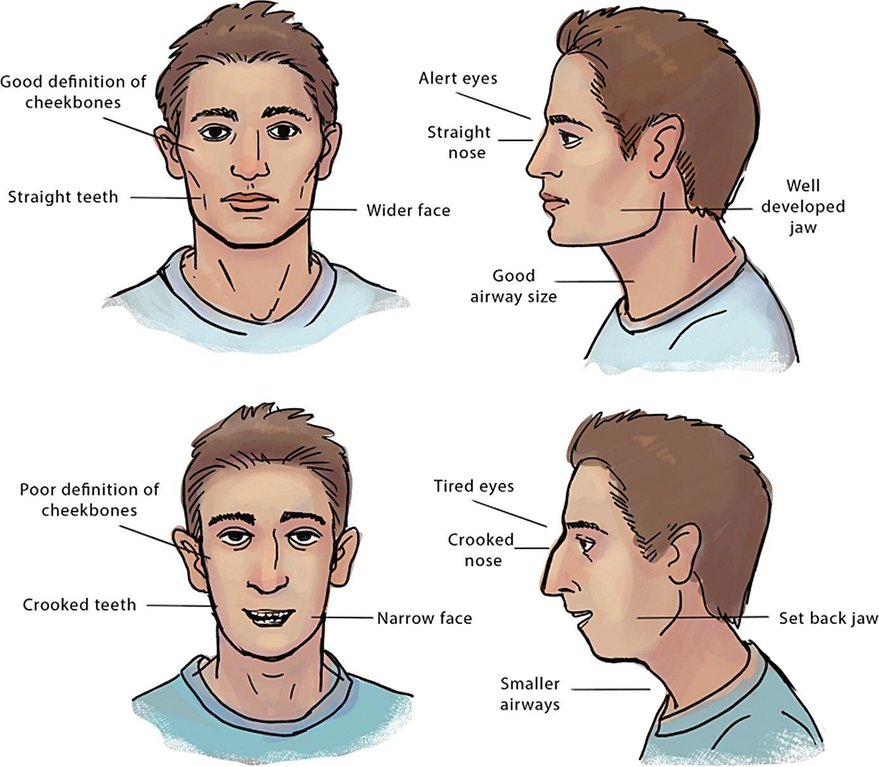
Breathing is a key ingredient to human function and global health. It’s a human reflex we’re born with, and it is directly attached to our nervous system.
What causes mouth breathing?
Improper development of the stomatognathic system.
We breathe a total of 18,000 times per day and by the age of twelve, we will have taken close to 80 million breaths.
When breathing through your mouth, the stomatognathic system becomes unbalanced, which causes the deformation of the upper jaw (maxillary), creating a “V-shaped” arch as opposed to a correct “U-shaped” arch.
When the maxilla is not well developed due to mouth breathing, the face is long and skinny, the eye sockets do not develop properly, the eyeballs cannot develop optimally into a sphere shape, which can result in various ophthalmic issues such as astigmatism or myopia.
The narrowing of the upper arch will push the lower jaw back. This forces the TMJ to shift distally while the TMJ disk slips forward.

–> It affects your IQ.
A systematic review of American literature done by The Federal University of Brazil found that “Overall, 80% of the articles showed a higher incidence of learning disabilities among mouth breathers.” Concluding that “This systematic review has shown that mouth breathers are more likely to have learning difficulties than nasal breathers.”

A systematic review by J Bras Pneumol found that “Respiratory biomechanics and exercise capacity were negatively affected by Mouth Breathers (MB).” The presence of moderate forward head posture (FHP) acted as a compensatory mechanism in order to improve respiratory muscle function.
The musculoskeletal strain in the cervical region needed to support a forward head posture can cause a cascade of events leading right down to the feet. A forward head posture creates the center of gravity to shift forward, a condition known to Posturologists as an anterior scapular plane.
–> Reduces Cardiac Output.
In 1960, Dr. Macary noted that children that breathed through the mouth were found to have a more developed right atrium of the heart.
However, when nasal breathing was promoted, the systematic volume of the right side of the heart as well as the cardiac rhythm were diminished. In conclusion “Mouth breathing forces the heart to work harder to compensate for all this unfiltered air.”
–> Promotes Ear Infections
The middle ear is connected to the nose through a narrow canal called the eustachian tube.
This tube is responsible for keeping the pressure on both sides of the eardrum the same and it is responsible for draining mucus secreted by the middle ear towards the pharynx.
Mouth breathing prevents proper ventilation of the middle ear giving rise to an accumulation of mucus which is often responsible for ear infections. The only function that serves to keep this canal open is nasal breathing.

–> Changes Fascial Growth
The vast majority of health care professionals are unaware of the negative impact of upper airway obstruction (mouth breathing) on normal facial growth and physiologic health.
Children whose mouth breathing is untreated may develop long, narrow faces, narrow mouths, high palatal vaults, dental malocclusion, gummy smiles, and many other unattractive facial features, such as skeletal Class II or Class III facial profiles.
–> Affects Your Quality of Sleep
In children, interrupted breathing during sleep can have severe effects on brain growth. Their brain needs uninterrupted periods of oxygen-rich sleep to rest and regenerate. Oxygen deprivation damages this process. Sleep apnea in children is known to increase risk of hyperactivity, ADHD, tiredness, and poor concentration.
The warning signs of mouth breathing show up in the first months of life. Making sure a child breathes the right way is one of the best ways to ensure their brain, jaw and teeth develop properly. It could be all that’s required to prevent your child needing braces.
What to do if you’re a mouth breather?
You must change your breathing habits.
This can be done with daily tongue exercises, but the process can be long and gruesome.
In addition to this, a Functional Activator is a great tool that can be used to improve neck posture through tongue positioning.
Jaw And Body Connection

JAW AND BODY CONNECTION
- Gain an understanding of the full spectrum of how the jaw affects the whole body
- In-depth graphically annotated infographic and tutorials
- Access to our private member’s forum
- A listing on our find a trainer page (upon certification)
- All future modules and content updates, at no extra cost
- PDFs (worksheets, templates, case studies, and more)

